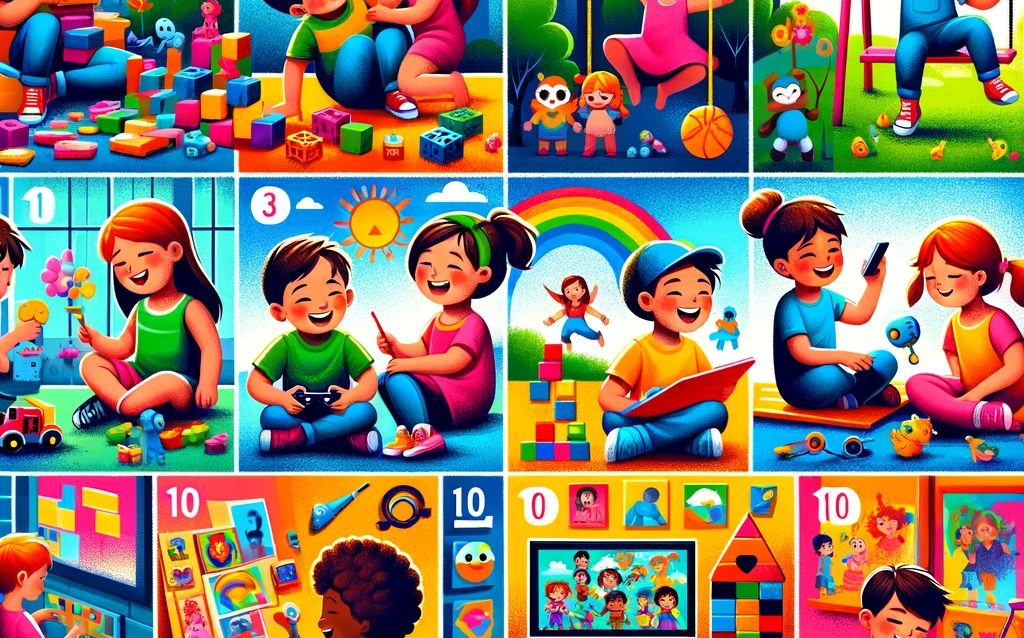Children’s preferences are as varied and dynamic as the children themselves. Over the years, numerous studies have sought to understand what captivates the interests of young minds most effectively. Here, we explore some of the key findings from recent research on what children generally prefer across different domains such as toys, activities, and digital engagement.
Toys and Playthings
Traditional toys such as dolls, action figures, and building blocks continue to be popular among children. Research indicates that these toys not only entertain but also aid in the cognitive and social development of children.
- Building Blocks: Toys like LEGO encourage creativity and problem-solving skills. They allow children to experiment with design and structure, enhancing spatial awareness and engineering concepts.
- Dolls and Action Figures: These toys can enhance emotional and social skills through imaginative play. By role-playing different scenarios, children learn empathy, communication, and emotional regulation.
- Educational Toys: Puzzles, educational kits, and STEM toys are increasingly popular, as they combine fun with learning, promoting cognitive development and critical thinking skills.
Outdoor and Physical Activities
Studies consistently show a strong preference among children for outdoor play. Activities like playing on swings, slides, and sports not only keep them physically active but also promote their social skills as they interact with peers.
- Exploratory Play: Activities such as climbing, running, and exploring nature contribute to physical fitness and coordination. They also foster independence and problem-solving as children navigate new environments.
- Sports: Organized sports like soccer, basketball, and swimming help in building teamwork, discipline, and resilience. They also provide opportunities for making friends and developing a sense of community.
- Free Play: Simple activities like playing tag, riding bikes, and scavenger hunts encourage creativity and spontaneity, allowing children to use their imagination and invent new games.
Digital Interaction
In the digital age, children’s preferences have also shifted towards interactive and educational apps and games. These digital platforms offer a range of activities that can be both entertaining and educational.
- Educational Apps: Games that blend learning elements with fun, such as puzzles and memory games, are particularly popular. They suggest that children enjoy challenges that come with a sense of achievement.
- Interactive Stories: Digital storybooks and interactive narratives engage children in reading while allowing them to influence the story’s outcome, enhancing their engagement and reading skills.
- Creative Apps: Applications that allow children to draw, paint, or create music digitally provide an outlet for creative expression and technological familiarity.
Books and Stories
Literature and stories hold a special place in the hearts of children. Picture books and stories that involve adventure, fantasy, and humor are particularly favored.
- Adventure and Fantasy: Stories with imaginative worlds and adventurous plots stimulate children’s creativity and curiosity. They help in developing language skills and understanding complex emotions and social situations.
- Humorous Books: Books that make children laugh can improve their mood and encourage a love of reading. Humor helps children to see the lighter side of life and develop a sense of humor.
- Interactive Storytelling: Storytimes that involve reading aloud, with voices and expressions, engage children and make the experience more memorable and impactful.
Art and Creativity
Creative activities such as drawing, painting, and crafts are highly valued among children. These activities allow them to express themselves and explore their artistic talents.
- Visual Arts: Drawing and painting help in developing fine motor skills and visual-spatial abilities. They also provide a means for emotional expression and creativity.
- Crafting: Activities like clay modeling, crafting with recycled materials, and building models enhance problem-solving skills and perseverance. They give children the satisfaction of creating something tangible.
- Music and Dance: Engaging in music and dance activities promotes physical coordination, rhythm, and a sense of cultural appreciation. They also offer emotional expression and social interaction.
Top 10 Activities and Items Loved by Children
Here’s a list of the top 10 activities and items that are generally most liked by children, based on various studies and observations:
- Playing with Toys: Classic toys like building blocks, dolls, cars, and action figures remain perennial favorites.
- Outdoor Play: Activities like playing on swings, slides, and engaging in sports or games in parks or backyards.
- Video Games: Particularly those that are interactive and offer levels of challenge and reward, suitable for their age.
- Drawing and Painting: Creative expression through art is not only fun but also beneficial for cognitive development.
- Watching Cartoons and Movies: Animated films and shows that are entertaining and often educational attract children’s attention.
- Reading and Being Told Stories: Books with vibrant illustrations and engaging stories captivate children’s imaginations.
- Playing with Friends: Social interactions through play are essential for developing interpersonal skills.
- Interactive and Educational Apps: Digital games and apps that blend learning with fun are increasingly popular.
- Music and Dance: Activities involving music, whether listening, singing, or dancing, are universally enjoyed by children.
- Building and Crafting: Projects involving LEGO, clay modeling, and simple crafts that allow children to create something tangible.
Conclusion
These activities reflect a blend of physical, creative, and digital engagements that not only entertain children but also contribute to their growth and development. Understanding children’s preferences helps parents, educators, and caregivers provide enriching experiences that support their overall development. By balancing traditional play, outdoor activities, digital interaction, and creative endeavors, we can foster a well-rounded and fulfilling childhood experience.

